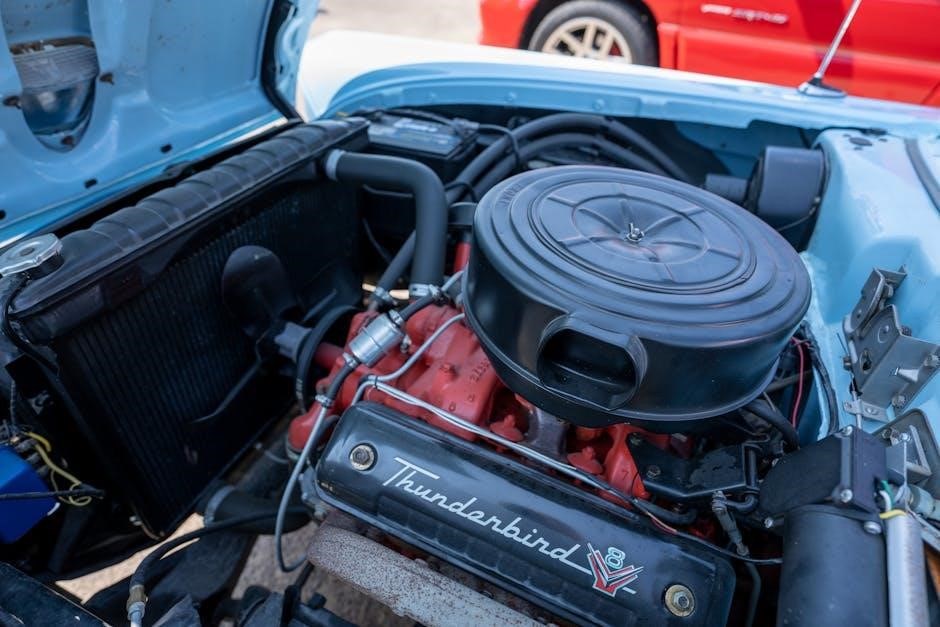air compressor manual pdf ingersoll rand
Need an Ingersoll Rand air compressor manual PDF? We've got you covered! Download the guide you need and get your compressor running smoothly. No more guesswork!
Ingersoll Rand Air Compressor Manual PDF: A Comprehensive Guide
Welcome to the comprehensive guide for your Ingersoll Rand air compressor manual in PDF format. This resource offers safe and reliable instructions crucial for optimal performance and longevity. It provides information for operation, maintenance, and more.
Ingersoll Rand air compressors are engineered for superior performance and reliability across diverse applications. Known for their robust design, these compressors deliver consistent air pressure, essential for many industries. Understanding the specific model you own is crucial, as each unit has unique operational characteristics and maintenance requirements detailed in its respective manual.
From reciprocating to rotary screw compressors, Ingersoll Rand offers a broad spectrum of solutions. These compressors are made with superior technology, providing dependable service. Always refer to your Ingersoll Rand air compressor manual PDF for safe and effective operation. This introduction sets the stage for a deeper dive into the manual’s essential sections.

Understanding the Importance of the Manual
The Ingersoll Rand air compressor manual is vital for safe operation and maintenance. It contains critical instructions, warranty details, and troubleshooting guidance, ensuring optimal compressor performance and preventing potential hazards.
Safety Instructions and Warnings
Prioritize safety by meticulously following the instructions outlined in the Ingersoll Rand air compressor manual. Never operate the compressor in wet conditions to avoid electric shock hazards. Ensure proper grounding and use appropriate personal protective equipment, including safety glasses and hearing protection. Be aware that intake air can contain carbon monoxide or other contaminants which can cause serious injury or death.
Ingersoll Rand air compressors are not designed or intended for life support applications. Always store the compressor in a dry environment, away from flammable materials. Regularly inspect the compressor for any signs of damage, and promptly address any issues to prevent accidents.
Installation Guidelines
Before installing your Ingersoll Rand air compressor, carefully review the installation manual for specific model instructions. Ensure a stable and level surface for placement, providing adequate ventilation to prevent overheating. Verify the electrical supply matches the compressor’s requirements, utilizing proper wiring and circuit protection. Connect the air outlet to a suitable air distribution system using appropriate fittings and hoses.
Isolate the compressor package from the carrier base with a flexible mounting system to reduce vibration. Inspect all connections for leaks, tightening as needed. Following these installation guidelines ensures safe, efficient, and reliable operation of your Ingersoll Rand air compressor, improving longevity.
Operating Procedures
Proper operating procedures are essential for safe and efficient use of your Ingersoll Rand air compressor. Consult the manual for detailed instructions on starting, monitoring, and stopping the compressor, ensuring optimal performance.
Starting the Compressor
Before initiating the start-up sequence for your Ingersoll Rand air compressor, it is imperative to carefully review the specific instructions outlined in your compressor’s manual. Ensure all safety precautions are strictly adhered to. Verify that the compressor is properly connected to a suitable power source and that all necessary valves are in the correct position. Prior to commencing, inspect the oil levels and confirm they are within the recommended range. Once these preliminary checks are complete, engage the power switch and closely monitor the compressor as it reaches its operational pressure. Take note of any unusual noises or vibrations during the start-up phase. Should any anomalies arise, immediately cease operation and consult the troubleshooting section of the manual for guidance.
Monitoring Compressor Performance
Regularly monitoring the performance of your Ingersoll Rand air compressor is crucial for maintaining optimal efficiency and preventing potential issues. Observe pressure gauges, temperature readings, and airflow rates to ensure they align with the manufacturer’s specified parameters. Listen attentively for any unusual noises, vibrations, or leaks that may indicate underlying problems. Keep a detailed log of performance metrics, noting any deviations from the norm. Regularly inspect the compressor’s components, such as belts, hoses, and connections, for signs of wear or damage. Promptly address any identified issues to prevent further degradation and costly repairs. Refer to the troubleshooting section of your manual for guidance on interpreting performance data and addressing potential problems. Consistent monitoring ensures reliable and long-lasting operation.

Maintenance Schedule
Adhering to a consistent maintenance schedule is vital for the longevity of your Ingersoll Rand air compressor. Regular upkeep prevents issues, ensuring efficient and reliable operation. Consult the manual for specifics.
Regular Inspections
Consistent visual inspections are paramount to the upkeep of your Ingersoll Rand air compressor. Examine hoses for cracks or leaks, check the air filter’s cleanliness, and confirm proper gauge functionality. Look for any unusual noises during operation, as these could indicate underlying issues.
Verify that all safety devices are correctly installed and functioning. Pay close attention to the compressor’s overall condition, noting any signs of wear or damage. Regular checks can prevent small problems from escalating into major repairs. Refer to your manual for detailed inspection points and frequency recommendations, tailored to your model.
Oil Changes and Lubrication
Maintaining proper lubrication is crucial for the longevity and efficiency of your Ingersoll Rand air compressor. Regular oil changes prevent excessive wear on moving parts, ensuring smooth operation. Refer to your specific manual for the recommended oil type and change intervals, as these vary by model. Always use genuine Ingersoll Rand oil or an approved equivalent to maintain warranty coverage.
Before changing the oil, allow the compressor to cool down completely. Dispose of used oil responsibly, following environmental guidelines. Lubricate all specified components, such as bearings and cylinders, according to the manual’s instructions. Proper lubrication minimizes friction and prevents premature failure.
Filter Replacement
Regular filter replacement is essential for maintaining the air quality and overall performance of your Ingersoll Rand compressor. Clean filters prevent contaminants from entering the system, protecting internal components. Check your compressor’s manual for recommended filter replacement intervals, as these vary based on operating conditions. Using genuine Ingersoll Rand filters ensures proper fit and optimal filtration efficiency.
Before replacing filters, ensure the compressor is turned off and depressurized. Inspect the new filter for any damage before installation. Follow the manual’s instructions carefully to properly install the new filter, ensuring a tight seal. Neglecting filter replacement can lead to reduced air quality and compressor damage.
Troubleshooting Common Issues
This section addresses common problems encountered with Ingersoll Rand air compressors. We’ll guide you through identifying problems and provide solutions based on the compressor manual. Remember safety first when troubleshooting.
Identifying Problems
Successfully troubleshooting issues with your Ingersoll Rand air compressor begins with accurate problem identification. This involves careful observation and a systematic approach. Start by noting any unusual noises such as hissing, knocking, or grinding sounds. Check for leaks in air lines, fittings, and the tank itself. Monitor pressure readings; unusually low or high pressure can indicate a problem.
Also, pay attention to the compressor’s cycle time – is it running more frequently or for longer periods? Examine the air quality for excessive moisture or oil. Finally, consult the Ingersoll Rand manual for specific symptoms and potential causes to aid in pinpointing the issue.
Solutions and Repair Procedures
Once a problem is identified, implementing appropriate solutions is crucial. Always consult the Ingersoll Rand air compressor manual PDF for detailed repair procedures specific to your model. Before any repair, ensure the compressor is disconnected from power and the air tank is fully depressurized. For leaks, try tightening fittings or replacing damaged hoses.
If the pressure switch is faulty, replace it with a genuine Ingersoll Rand part. For motor issues, check wiring and consider professional repair. Regularly drain moisture from the tank to prevent rust. When in doubt, seek assistance from a qualified technician to avoid further damage or injury. Refer to diagrams.

Parts List and Diagrams
The parts list and diagrams section is vital for identifying replacement parts and understanding your compressor’s assembly. Use these resources to ensure accurate repairs and maintenance, consulting your manual.
Identifying Replacement Parts
Correctly identifying replacement parts is crucial for maintaining the efficiency and longevity of your Ingersoll Rand air compressor. The parts list within the manual provides detailed information, including part numbers and descriptions, ensuring you order the correct components. Using genuine Ingersoll Rand parts guarantees compatibility and optimal performance.
Refer to the exploded view diagrams in conjunction with the parts list for a clearer understanding of each part’s location and function within the compressor assembly. This comprehensive approach minimizes errors during ordering and replacement, preventing potential damage to your equipment. Always cross-reference the part number with your specific compressor model to ensure accuracy.
Using Diagrams for Repair
The diagrams included in your Ingersoll Rand air compressor manual are invaluable tools for effective repair and maintenance. These exploded views offer a detailed visual representation of the compressor’s components and their relationships. By carefully studying these diagrams, you can accurately identify the location of specific parts and understand the assembly sequence;
Before commencing any repair work, thoroughly review the relevant diagram. This visual aid helps prevent errors during disassembly and reassembly, ensuring that all components are correctly positioned. The diagrams also assist in troubleshooting by providing a clear picture of the compressor’s internal workings, enabling you to pinpoint the source of the problem more effectively. Always refer to the diagram in conjunction with the written instructions for best results.

Warranty Information
Ingersoll Rand warrants its air compressors to be free from defects. Consult your manual for specific coverage details, claim procedures, and duration of the warranty. Understanding this information is crucial.
Coverage Details
The Ingersoll Rand air compressor warranty provides specific coverage against defects in materials and workmanship. This coverage typically extends to the initial user and applies to portable air compressors manufactured by Ingersoll Rand. The duration of the warranty and the specific components covered may vary depending on the model and type of compressor. It is essential to review the warranty documentation in your manual to understand the precise terms and conditions. Be aware of any exclusions or limitations, such as damage caused by improper use, maintenance, or unauthorized repairs. Following prescribed maintenance intervals and using genuine Ingersoll Rand parts are often requirements to maintain warranty validity.
How to Claim Warranty
To initiate a warranty claim for your Ingersoll Rand air compressor, begin by gathering all relevant documentation, including proof of purchase, the compressor model number, and a detailed description of the issue you are experiencing. Next, contact an authorized Ingersoll Rand distributor or service center. They will guide you through the claim process, which may involve an inspection of the compressor to determine the cause of the defect. Be prepared to provide any requested information, such as maintenance records, to support your claim. If the issue is covered under warranty, the authorized service center will arrange for repairs or replacement parts as needed; Adhering to their instructions will ensure a smooth and efficient warranty claim resolution.

